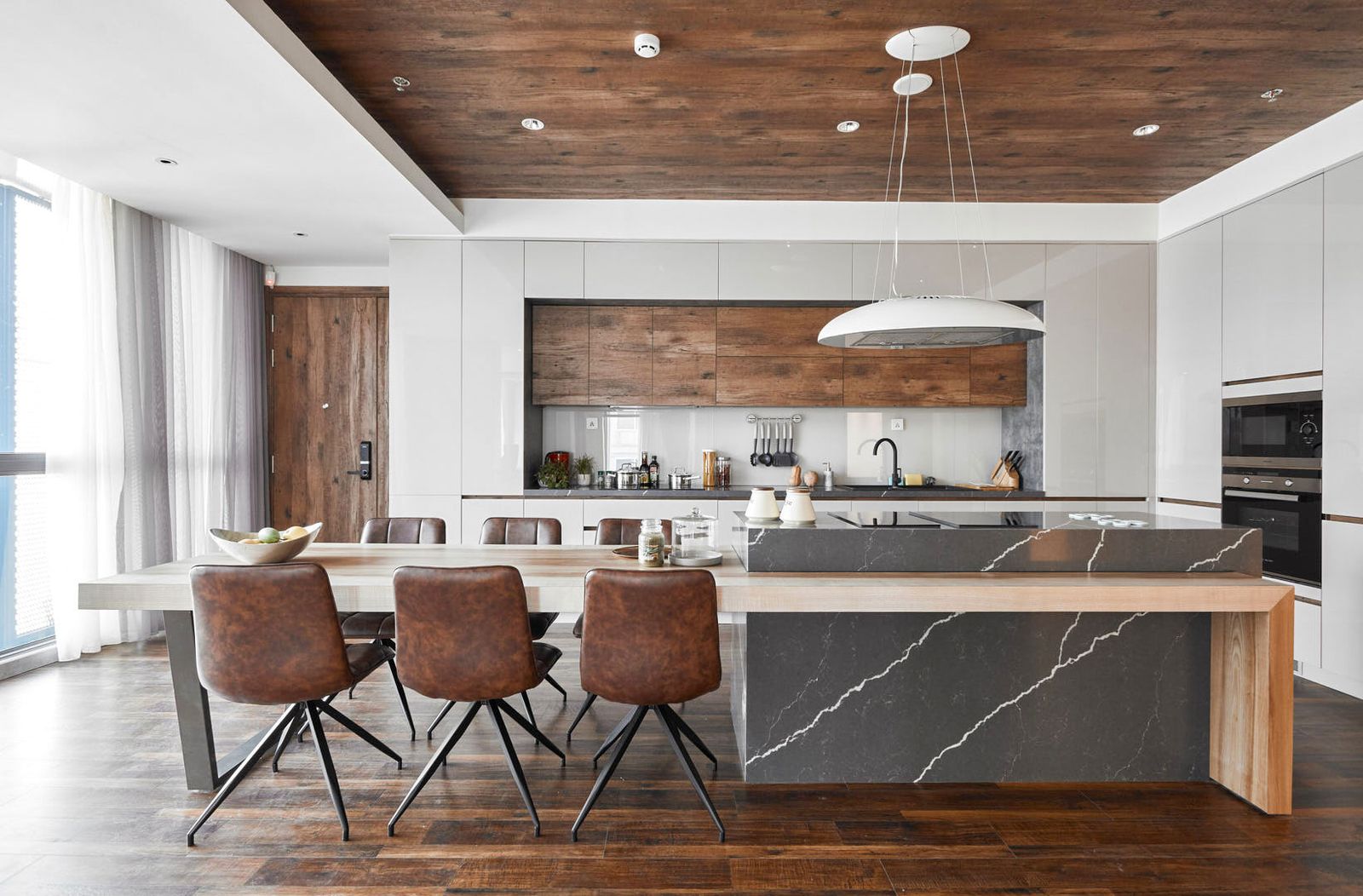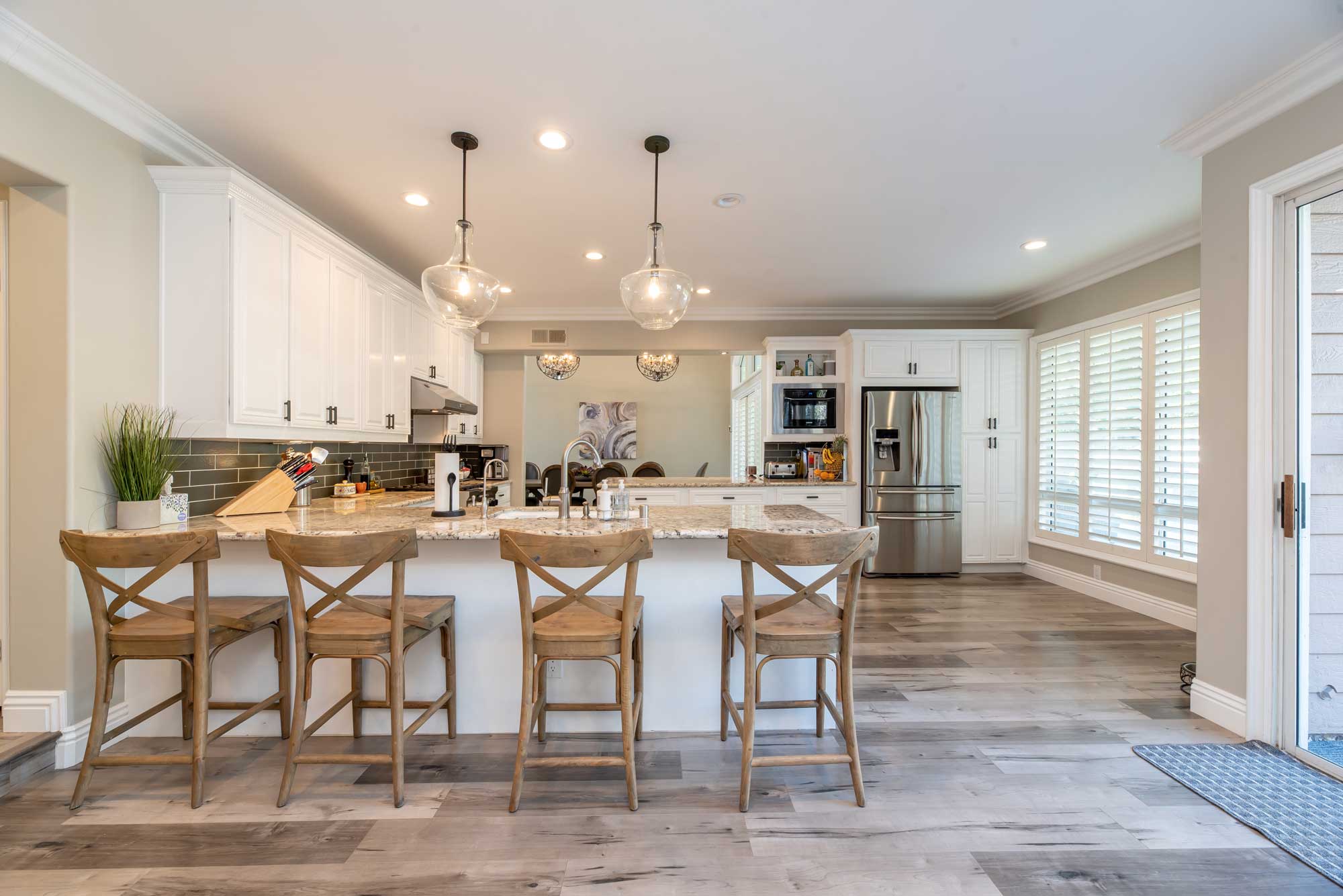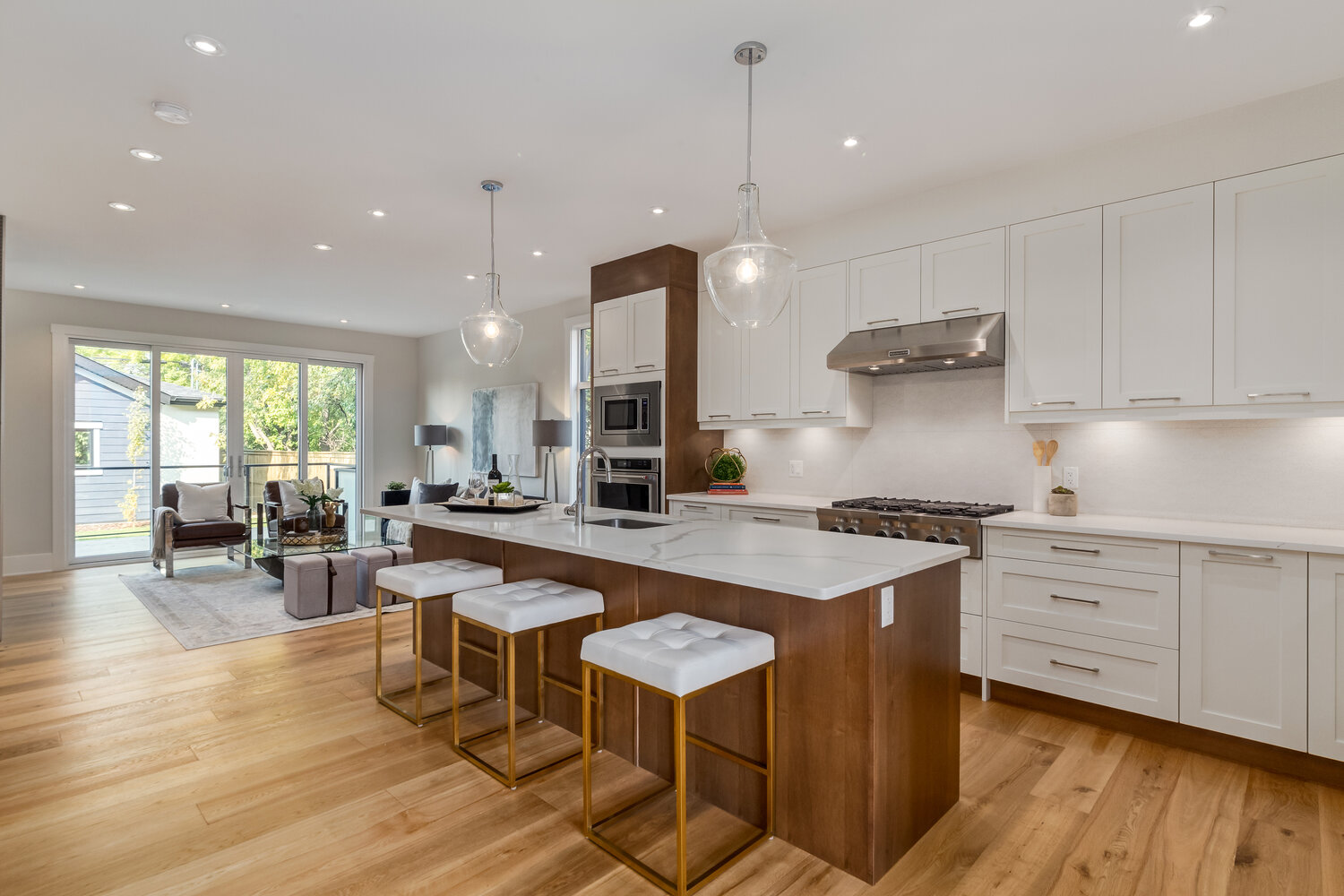Eco-friendly living can have more of an impact than most think. Not only can it benefit the planet, but it can also benefit your wallet and your health. Whether you’re looking to remodel your kitchen and bath, or building one from scratch, going green is simpler than you think. Here’s how sustainable materials and methods can be used to benefit your home aesthetic, and health.
How Sustainability Can Be Achieved In Cabinet Manufacturing
The furniture industry is among the most destructive contributors to global pollution. Unsustainable practices like deforestation, chemical releases into the environment, and tremendous waste generation significantly impact our planet’s ecosystem- not only damaging habitats but also leading to energy consumption of a staggering magnitude. It is more important than ever for manufacturers in this sector to employ environmentally conscious solutions in order reduce their ecological footprint and contribute towards a sustainable future for generations ahead.
Sustainability in cabinet manufacturing can be achieved through various practices and techniques.
Some key ways to achieve sustainability in this industry include:
1. Prioritize the use of sustainably sourced materials
Using materials that are sustainable and biodegradable such as bamboo, cork, and recycled wood can help reduce the environmental burden of cabinet manufacturing. For sustainable construction projects, it is important to prioritize the use of products and materials with the lowest environmental impact.
Should choose products with labels, standards and certificates of origin. For example, the FSC forest certification label on wood is proof that wood and paper products are made with materials from well-managed forests or recycled sources. Furthermore, the sustainability of a particular product or material needs to be assessed throughout its entire useful life – from extraction, production, transport, use, and all the way to disposal. Using furniture and products from sources that have safe manufacturing processes and socially responsible business practices can contribute to lessening the strain on the environment.
One of the more obvious approaches to being more eco-friendly would be to use materials that are sustainable and biodegradable. Some examples include bamboo, cork, and recycled wood. When selecting materials, it’s important to select products with labels, standards and certificates of origin.

For example, the FSC forest certification label on wood is proof that wood and paper products are made with materials from well-managed forests or recycled sources. Furthermore, the sustainability of a particular product or material needs to be assessed throughout its entire useful life – from extraction, production, transport and use to disposal. Use furniture and products from sources that have safe manufacturing processes and socially responsible business practices.

Using furniture and products from sources that have safe manufacturing processes and socially responsible business practices can contribute to lessening the strain on the environment.
2. Implementing energy-efficient manufacturing processes
By using energy-efficient equipment and techniques, manufacturers can reduce their carbon footprint and decrease their dependence on non-renewable energy sources.
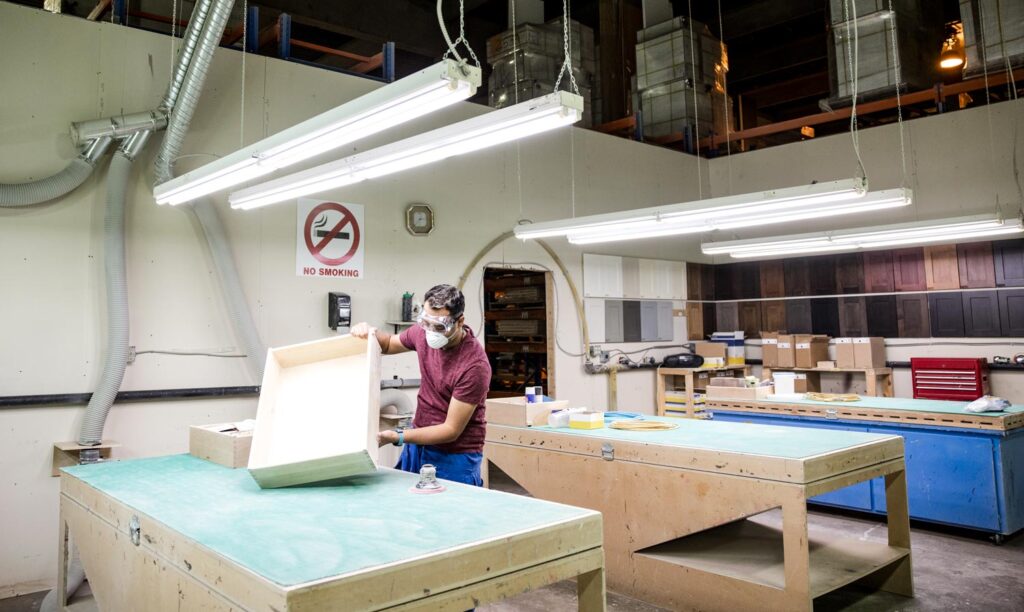
A quick and easy hack to save on your electric bill would be to adjust some of your lighting selections. Great alternative examples include installing energy-saving LEDs, halogen lamps, and compact fluorescent lamps.
3. Reducing waste
Implementing practices such as lean manufacturing and just-in-time production can help to reduce waste in the manufacturing process. Recycling and reusing materials can also be a valuable part of a waste reduction strategy. Sustainable thinking goes hand in hand with waste reduction, and perhaps it’s time to re-evaluate our consumer approach to buying new, when repairing or replacing with second-hand goods is also the solution effective law. Popular sustainable cabinet trends today include recycling, upgrading and reusing.
If you want to go even greener, choose new synthetic products made from recycled waste – for kitchen sinks and worktops, wall and floor tiles, carpets and more. That way, waste becomes the raw material for new products in a closed production cycle that reduces waste.
4. Improving product design
By designing cabinets that are durable and long-lasting, manufacturers can reduce the need for frequent replacements, which can help to conserve resources and reduce waste. This is because if cabinets are designed to be durable and long-lasting, they will not need to be replaced as frequently, which can help to reduce the amount of waste generated by the disposal of old cabinets. Additionally, by designing cabinets that are easy to repair, manufacturers can extend the lifespan of cabinets even further, as small repairs can help to prevent larger issues that might otherwise lead to the need for replacement.
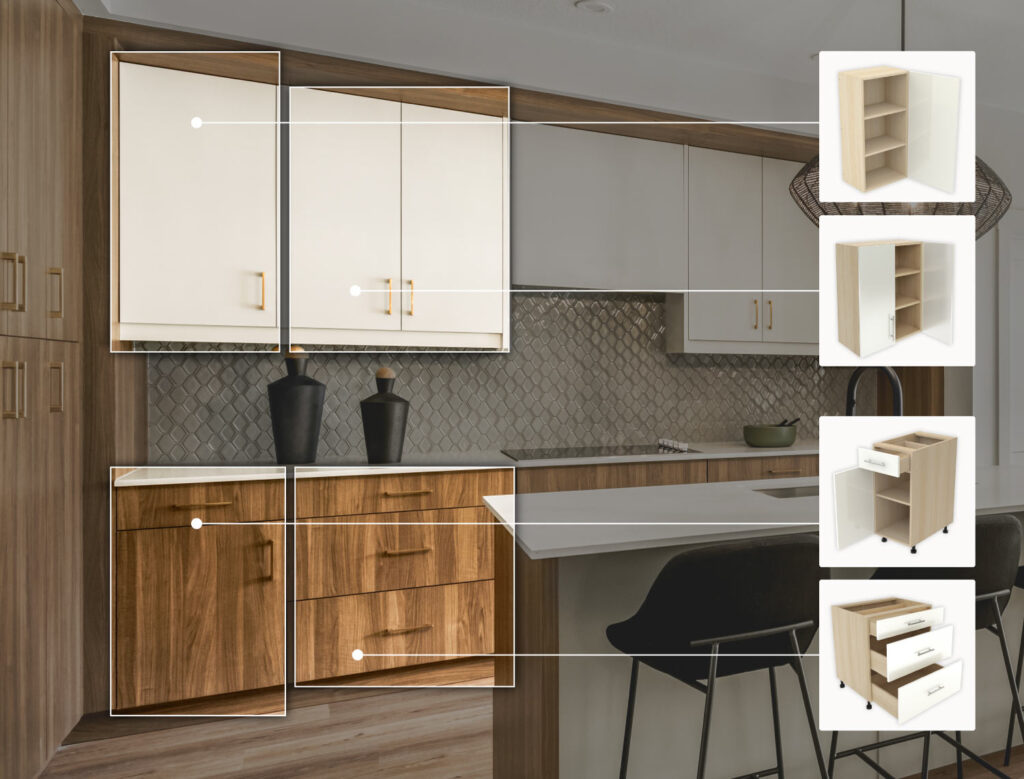
Furthermore, designing cabinets with durability in mind can also reduce the environmental impact of manufacturing. This is because the production of cabinets requires the use of natural resources and energy, so reducing the frequency of production by designing longer-lasting cabinets can help to conserve these resources and reduce the associated environmental impacts. Additionally, designing cabinets that are easy to repair can help to reduce the environmental impact of manufacturing, as repairing a cabinet typically requires fewer resources than producing a new one.
5. Encouraging sustainability in the supply chain
Encouraging sustainability in the supply chain is a crucial step in promoting sustainability in any industry. By working with suppliers to promote sustainable practices, companies can help ensure that the resources they use are responsibly sourced and managed.
Using certified wood, for example, means that the wood comes from forests that are managed in an environmentally and socially responsible way. This can include measures to protect biodiversity, reduce greenhouse gas emissions, and respect the rights of indigenous people and local communities.
6. Educating consumers
Raising awareness about the importance of sustainability in cabinet manufacturing, and providing information about environmentally friendly options, can help consumers make informed choices that support sustainable practices.
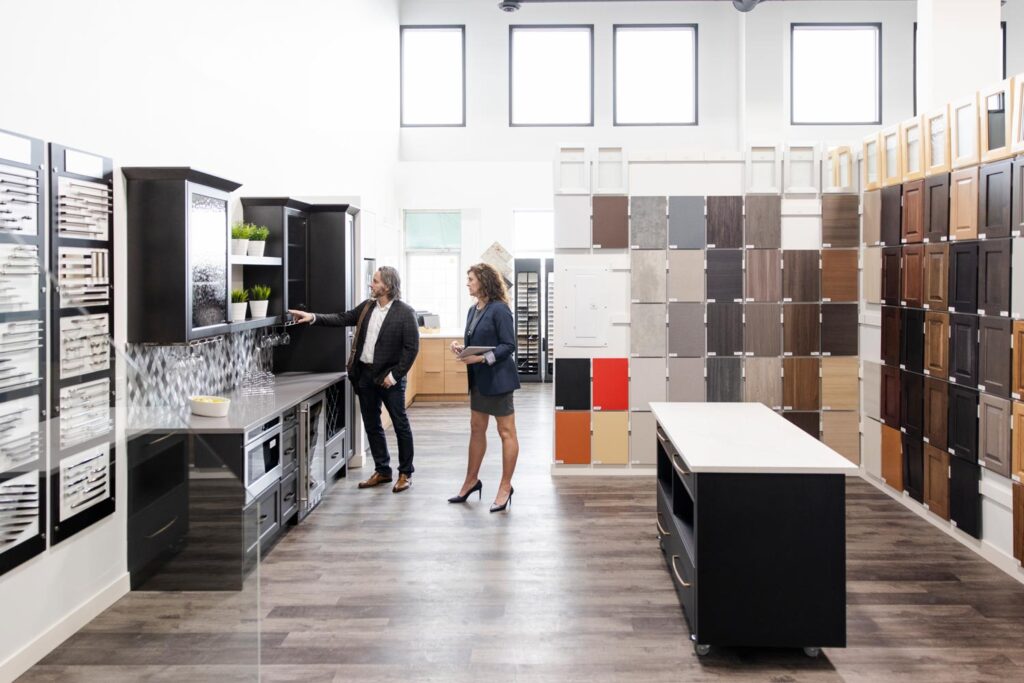
How Aesthetics & Functionality Can Be Achieved Along With Being Sustainable.
Choosing sustainability doesn’t mean you have to sacrifice aesthetics.
Here are some ways to create furniture that is both functional and sustainable:
1. Materials
Using responsibly sourced wood and low-VOC stains and paints can reduce the environmental impact. The colour, stains, and paint used on kitchen cabinets greatly affect their appearance and durability. Light woods like maple make spaces feel bright and airy, while dark woods like cherry give a traditional and warm vibe. Stains enhance natural beauty and add protection, while different types of paint give different finishes. Long-lasting paint depends on the quality and type used.
Ultimately, considering these factors is important for achieving a visually appealing and durable result.

2. Longevity
Consider the entire lifecycle of the product, including the manufacturing process and disposal methods. Look for companies that use environmentally responsible manufacturing processes, such as reducing waste and energy consumption, and that have certifications like the Forest Stewardship Council (FSC) certification for responsibly sourced wood.
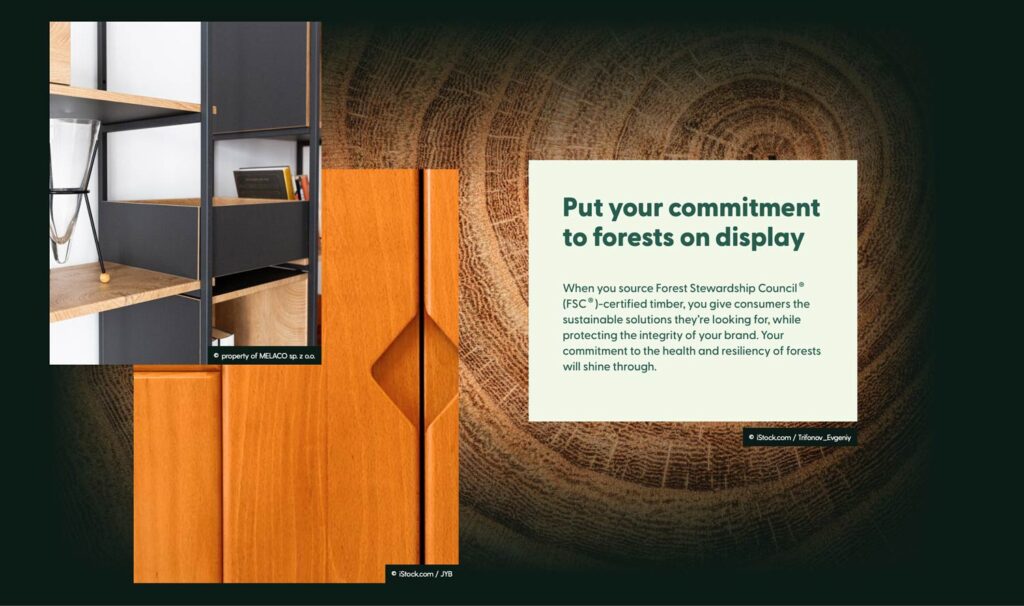
3. Design & Functionality
Incorporate design elements that promote sustainability, such as multi-functional pieces, modular designs that can be reconfigured over time, or designs that allow for easy repair or replacement of parts.
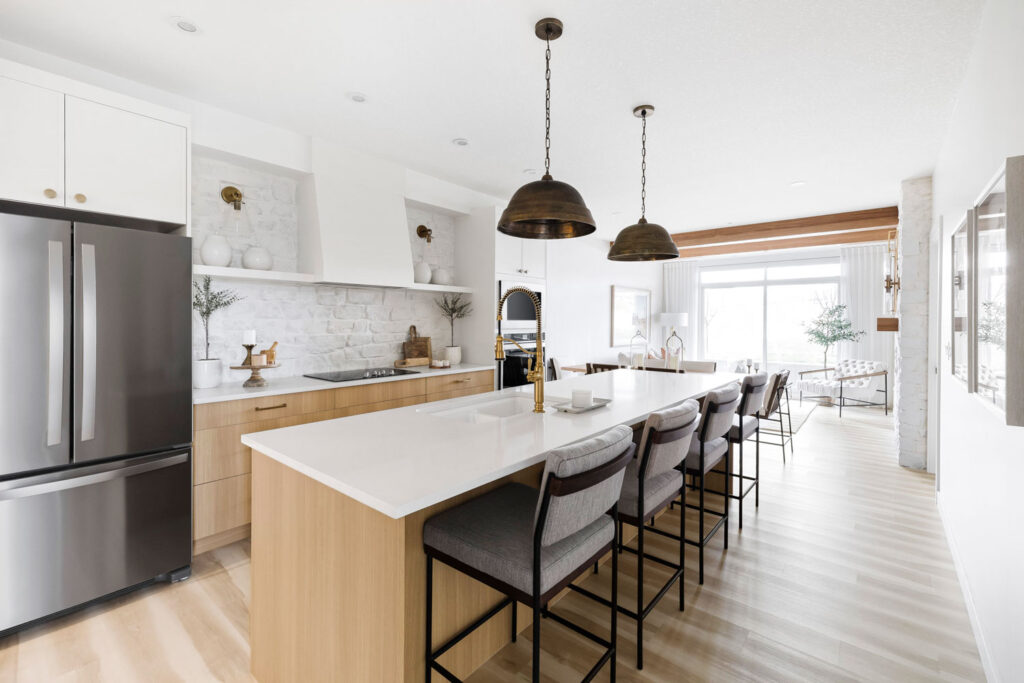
Consider the intended use of the furniture and choose designs that meet your needs, whether it is for storage, workspace, or display. Make sure the furniture is durable and well-made, so that it lasts for a long time and does not need to be replaced frequently.
By combining these elements, it is possible to create cabinet furniture that is both beautiful and sustainable.
Moving Forward with Sustainable Cabinet Manufacturing
Sustainable cabinet manufacturing is pushing cabinet manufacturers to adopt sustainable practices and invest in more environmentally friendly production methods. There are also organizations and initiatives that are working to promote sustainability in the furniture industry, such as the Forest Stewardship Council (FSC) and the Sustainable Furnishings Council. These organizations provide certification and labeling programs to help consumers identify furniture products that are made in a sustainable manner.
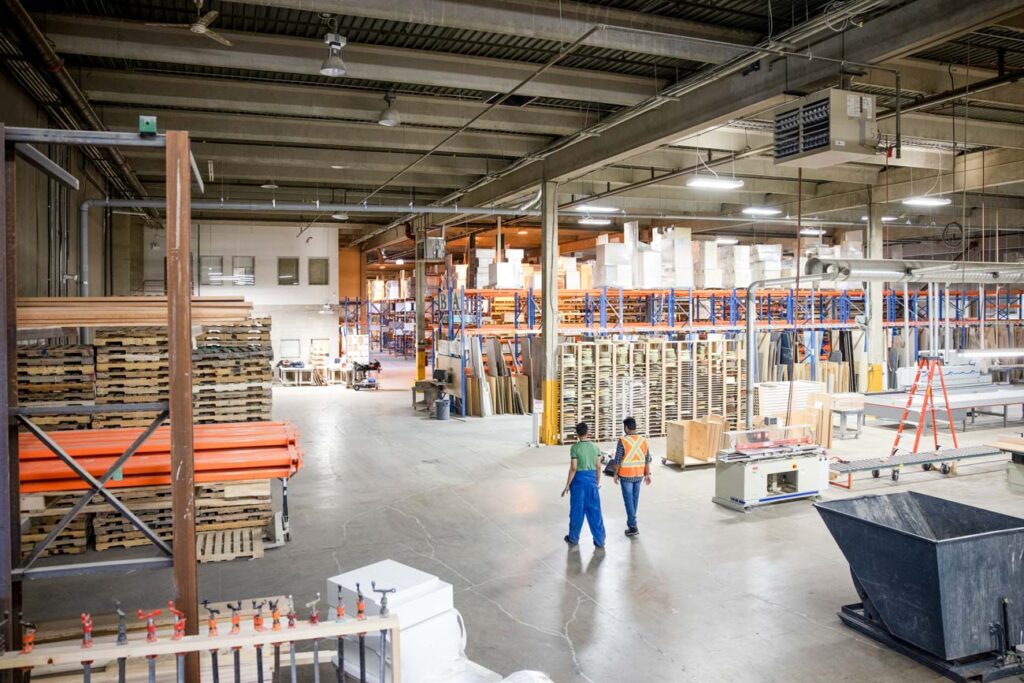
In conclusion, while sustainable cabinet manufacturing is still not yet mainstream, it is becoming increasingly important, and there are many positive trends and initiatives in the industry that suggest that sustainable practices will become more widely adopted in the future.
Transitioning towards a more eco-friendly approach does not need to be an all or nothing endeavour. Sustainability is all about the steps you take forward. Integrating just a few eco-friendly elements can make a difference to your health, wallet, and the environment.
Looking for upgrading kitchen cabinets in Calgary? Whatever your budget, whatever your style, our kitchen cabinet design professionals are here to help bring your vision to life. With over 50+ years of combined experience in cabinetry and design, our team at Zen Living has the skills and knowledge you need to turn your dreams into reality. Whether you’re looking for a complete renovation or a simple refresh, we are here to help.
To get started, simply fill out our form for a free consultation, or you can give us a call at (587) 817-5182 for free design consultation. Our team at Zen Living Kitchen & Bath is eager to work with you and hear all about your project ideas. We are dedicated to turning your vision into a reality.


